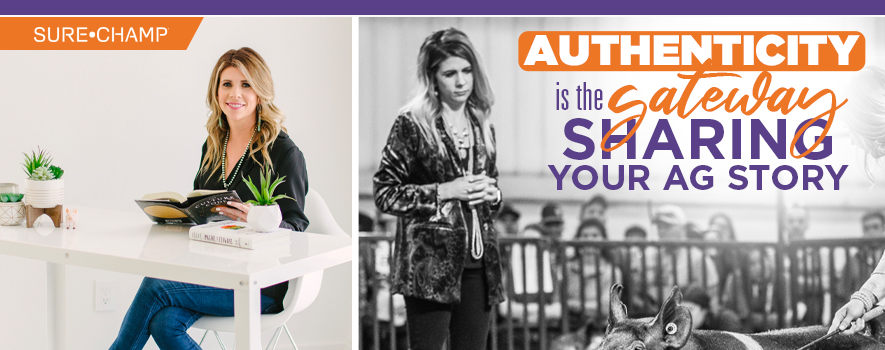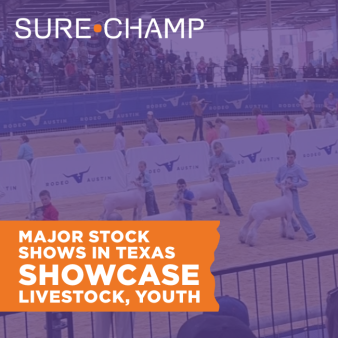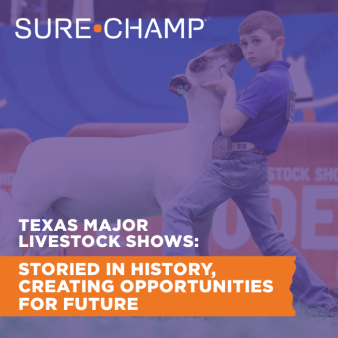
Kylee Deniz didn’t always dream of being a social media expert. In fact, she was very involved on her family’s alfalfa farm growing up outside of Denver, Colorado. She was also heavily involved in showing pigs and cattle while competing in livestock judging through 4-H and FFA. It isn’t until she graduated from high school and received her Black Hawk College – East email address with the dot edu extension that she got an invitation to join Facebook, originally created as an educational networking portal.
Livestock judging took Deniz to Kewanee, Illinois, for junior college and then to Oklahoma State University where she completed her bachelor’s and master’s degrees in agricultural communications. With some years in Des Moines, Iowa, at the advertising agency Lessing-Flynn and then the National Pork Board, Deniz assumed the role of Executive Director of the Oklahoma Pork Council in March 2021.
“What I think is so beautiful about the position I have today is I really get to use all my career experiences to do what I do now. Our team here at the Oklahoma Pork Council shares pork’s story from farm to fork with consumers. We work with pork producers and industry allies on things such as foreign animal disease prevention and preparedness. Additionally, we focus on developing next generation leaders to build up our pipeline of people to lead our industry, as well as foster relationships with elected officials and key stakeholders to protect the Oklahoma pork industry’s freedom to operate,” Deniz said and credits her involvement in youth programs for giving her the foundation and interest in livestock production.
Social media is here to stay. It is at our fingertips daily in numerous platforms, and a college email address is no longer needed to receive permission to join Facebook. Deniz reminds that a person could actually have multiple profiles on a social network and keeping personal and professional profiles separate is important.
“Social media is key to the concept of sharing about agriculture, sharing about the thing we love, and we dedicate our free time or careers to, and we want to defend agriculture. Social media is something we all have access to. We as a society today are in that space, and whether you chose Facebook, Instagram, Twitter, Snapchat or Tik Tok, the list goes on from there, it’s really the space where consumers, and we as people, are present. It’s important to be there with the ag message,” she encouraged.
Create your Personal Brand
Deniz said it is imperative to be authentic when sharing your ag story on social media. A person can’t be all-in about agriculture one day and carefree about it the next. That is part of creating your brand and showing your audience exactly who you are. This could be your signature hashtag or tagline, the way you appear to your audience or the font you use. Be yourself, but be authentic.
“Authenticity looks different for each person. For me often times, it’s in heels doing ag business, but for my husband who is also in agriculture, it is boots and jeans and a 4-wheeler. Those are two different examples of authenticity. If I attempted to share ag’s story in the way that he might, it’s not going to resonate, it’s not going to connect, and frankly someone is going to call me out,” Deniz said.
Another reason authenticity is so important is that potential employers and those reviewing scholarship applications will seek out your social media profiles. They will compare who you say you are on paper to the person you portray on social media. Make sure those are the same person, and brand yourself as such. According to Deniz, a simple Google search will often pull up a Facebook or LinkedIn profile.
“Social media profiles can be found even if you think they are marked private. I would encourage individuals to make sure their online presence matches their #IRL personal brand,” she said.
Introduce Yourself
Once you’ve established your personal brand, it is important to introduce yourself on your social platform. Make sure your followers know who you are, why agriculture is important to you, what your background is. Are you part of a multi-generation family farm? That offers some credibility and authenticity. Are you a first-generation livestock enthusiast who is part of an FFA chapter but wants to study ag law? That likely lends some trust to consumers who might share similar backgrounds.
“It’s important as a young person interested in advocating that you think first about building a relationship. You do it in person; you do it online. You have to make a connection before a message resonates. For young people who want to advocate or share their farm story, their personal brand matters,” Deniz said.
Stop the Scroll
Although statistics vary, it is safe to say that more than half of all social media is viewed on a mobile device. Therefore, the goal for those sharing their story on social media should be to “stop the scroll.” Deniz suggests the best way to grab the viewers’ attention is to share engaging content that most generally includes captivating photos or video.
”You want to stop someone’s scroll. Ask, is this content good enough to stop someone’s scroll? Today that is largely video or photo. Of course, people will still read text, but if you really want to stop the scroll, you need video or photo,” she said.
When you do take photos or videos, watch the background. You don’t want items in the background to distract from the main subject of your image. You also don’t want the image to lead to controversy or leave a negative thought in the viewer’s mind, especially if you don’t explain it well. They could potentially leave that negative thought in their head and not reach out for further explanation or education.
Fast Five Tips
Deniz offered some quick, but important advice to consider when making your social media posts to share your ag story.
1. Diversify your Posts
Science is nice, but it is ok to tell your story too. You don’t always have to be speaking directly to someone with the most recent facts and figures. A simple photo of you and your animals or your grandpa driving the combine during his 65th harvest also tells a great story. Be sure whatever method you do use, tell a brief story explaining the image and not just post a photo or video.
2. Verify your Source
“Do your due diligence. Make sure the source is accurate and reputable. Go to the source of truth and always fact check. Keep original sources with the science or stats,” Deniz advises.
It is very easy to share and reshare an image on today’s social media platforms or to use a creative program to tweak one of those images. If you see an image of interest, make sure you go to the original source, and share it from their original post. Don’t get caught up in sharing it when it has been shared multiple times.
Reliable sources in agriculture include 4-H, FFA, state beef, pork and lamb councils, the National Pork Board, National Pork Producers Council, National Cattlemen’s Beef Association and national breed and junior breed associations.
3. Proofread. Proofread. Proofread.
Your professionalism and your credibility will shine when you are accurate with your spelling, grammar and punctuation. If you are not the best speller or writer, ask a parent or teacher to review your copy before you post it for the world wide web to see.
4. Watch your Tone
It is hard to read your voice or emotion on a social media post that is only copy or a photo. The tone might be more evident in a video, but it still is simple to be misread on social media.
“It is very easy to be taken out of context. You might mean it funny, but it can be taken differently,” Deniz warns
5. Think Before you React
There is a lot of passion involved on social media, and it is always better to pause before commenting on something you want to react to. Often, our passionate responses seem defensive, even if we are correct; once again, this goes back to tone.
“We love agriculture, and it is very easy to respond or react with emotion. Just like in person or with email, it is always better to take a moment to think it through before you respond or react,” Deniz said.
Social media is here to stay, and new platforms are being created as ways to share our ag story with the consumers. It’s our job to build our personal brand, be authentic in who we are and the messages we share and tell the story on the platforms we are most comfortable using. Use your social media to tell your ag story. It’s the best story you can share.

